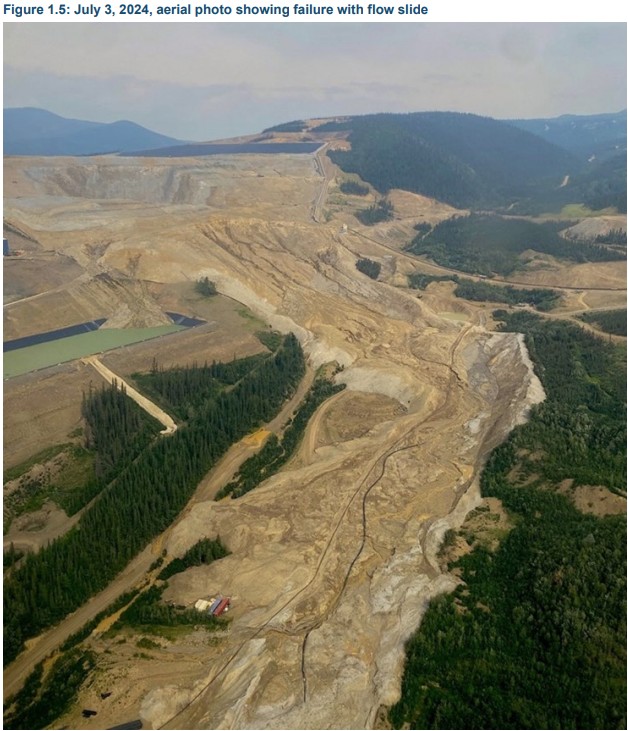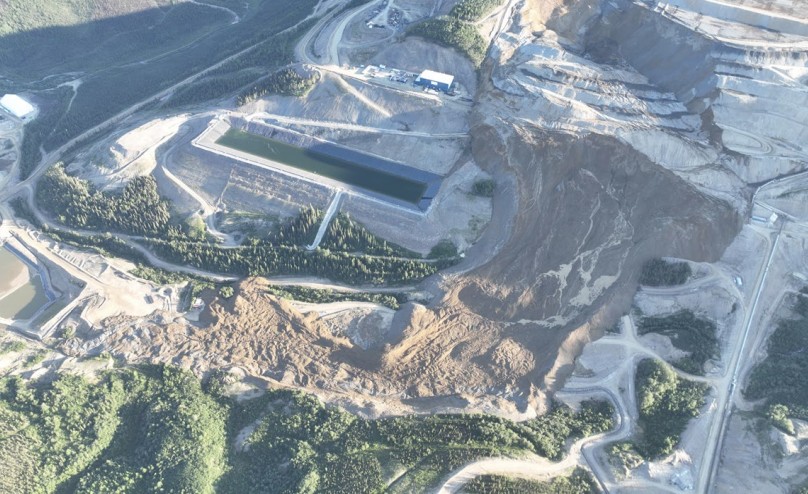The Independent Review Board has released its report into a 6 million cubic metre landslide in Canada. It indicates that an initial rotational failure triggered a flow slide that travelled 1,400 metres.
On 24 June 2024, a very large landslide affected a heap leach facility (HLF) at the Eagle Gold Mine in Yukon, Canada. I wrote about this event at the time. The failure was of sufficient scale to force the mine into administration – creating a very big pile of problems (if you’ll excuse the pun) for the government. The administrator is PWC, which has now released a report by the Independent Review Board established to understand what happened. The report can be downloaded as a PDF and makes interesting reading. As expected, it is a comprehensive piece of work.
This was a large landslide – the IRB report indicates a volume of 5,946,000 m3 (about 12.3 million tonnes) with a runout distance of 1,400 m. The report includes some nice imagery of the failure, including this picture of the main body of the landslide:-

Also included is this image of the upper portions of the landslide:-

The IRB report provides a detailed understanding of the sequence of events that led to the failure. In creating the HLF, the operators created an oversteepened section of ore (locally the slope angle as 36.5o), which was vulnerable to failure. The system for collecting the fluids that were being circulated through the HLF was deficient, allowing the water table to rise within the ore body, and this section of the HLF had low permeability, impeding drainage. Starting in mid-April, the operator increased the level of irrigation within the HLF, allowing the water table to rise until the factor of safety reduced to one.
On 24 June 2024, a rotational failure occurred in the oversteepened section of the HLF at the Eagle Gold Mine. This can be clearly seen in Figure 1. This was a rotational failure which remained within the HLF – see the intact benches in Figure 2.
Within 10 seconds, this triggered a flow slide through static liquefaction, which rapidly moved down the slope (as shown in Figure 2). In Appendix A2, it is estimated that the landslide moved at 9 to 18 metres per second, suggesting that the total time duration of the failure was 1.5 to 2.5 minutes.
I speculated at the time that this was a rotational failure that transitioned into a flowslide.
The IRB report into the Eagle Gold Mine landslide makes a series of recommendations (see page 123 and the following pages). These seem sensible – I can only hope that they are adopted. There has been a long succession of investigations into mining landslides that have also made very sensible recommendations, but failures continue to occur.
But, I would also highlight from an external perspective that some of these recommendations seem surprising. Thus, for example, the IRB recommends that the such facilities should have independent review boards; that a single individual (a “Responsible Person”) should be in place to monitor on-site activities; that there should be a detailed monitoring and surveillance system in in place to ensure that design assumptions are correctly satisfied; and that there should be active monitoring of the performance of the HLF.
All very sensible indeed, and it is impossible to disagree, but it is deeply shocking that such recommendations are needed for a large-scale mining facility in a properly regulated country with very extensive experience of mining.

